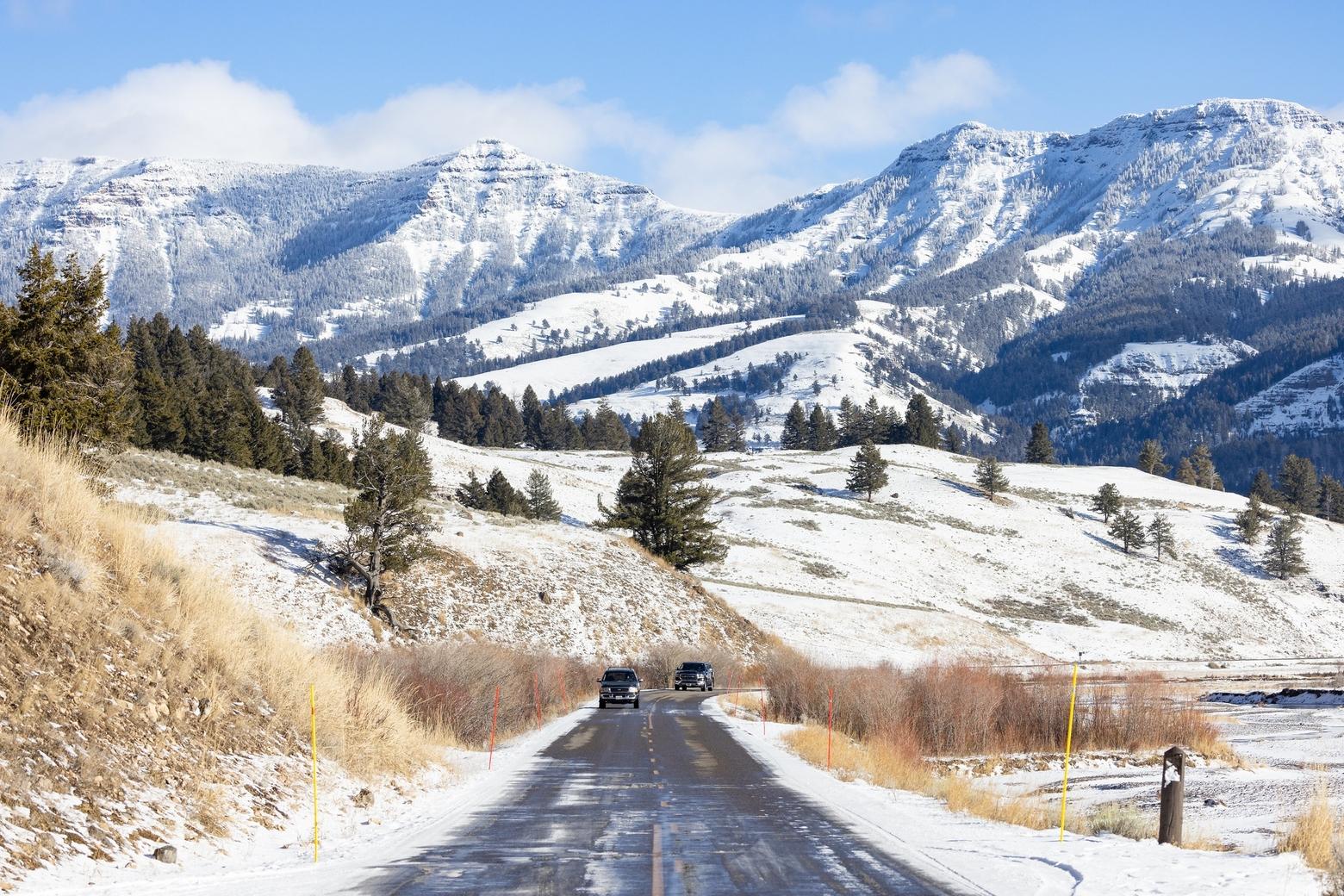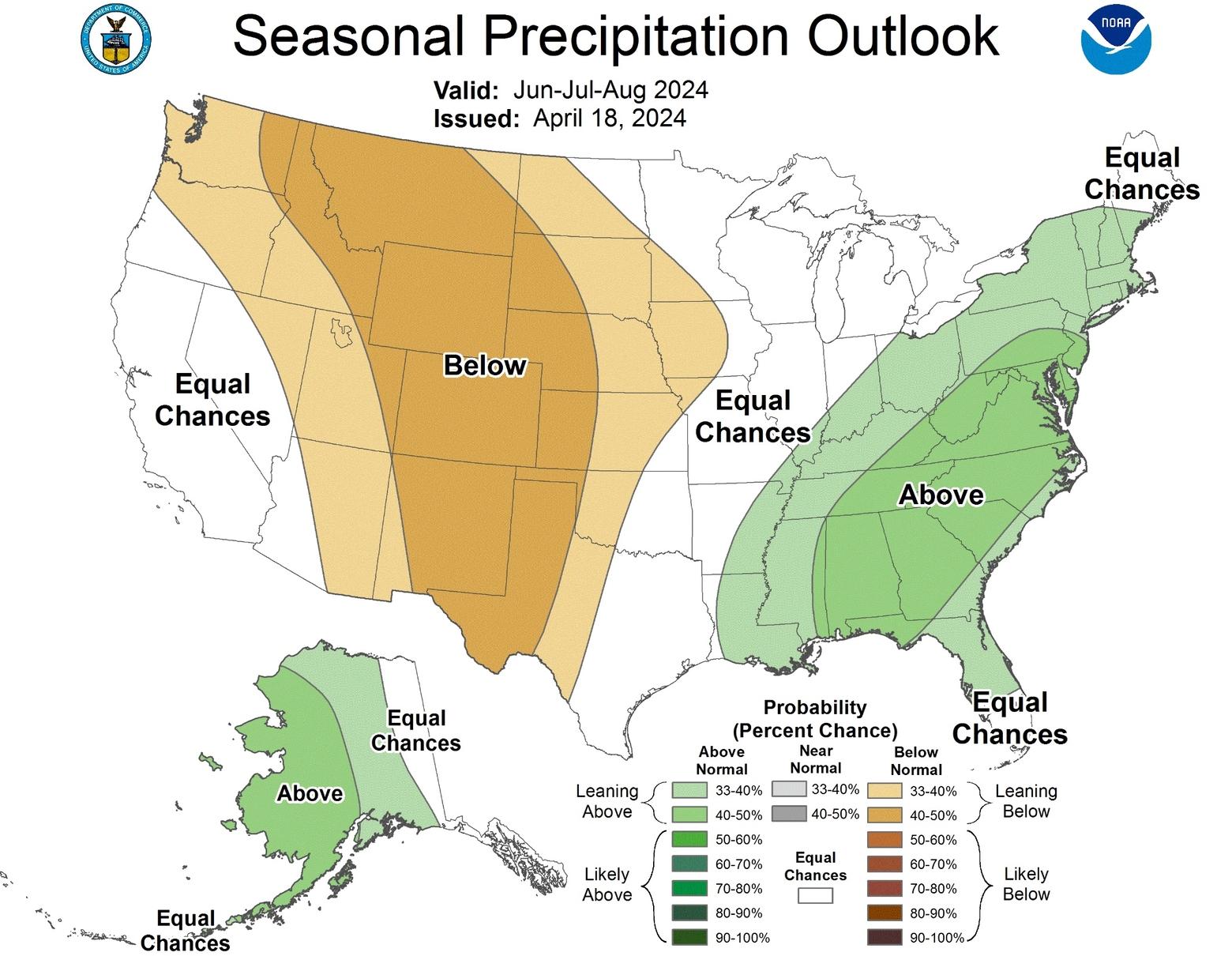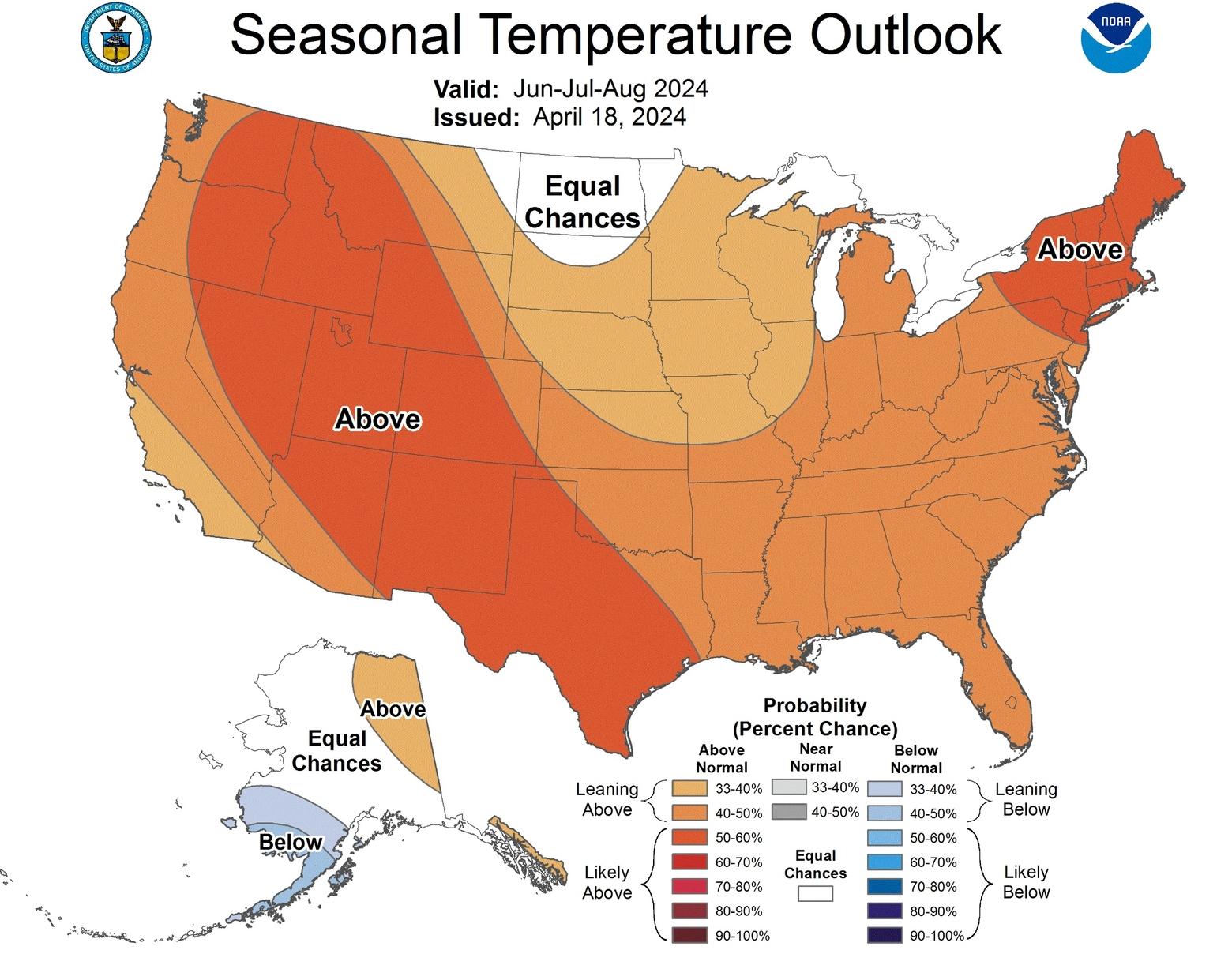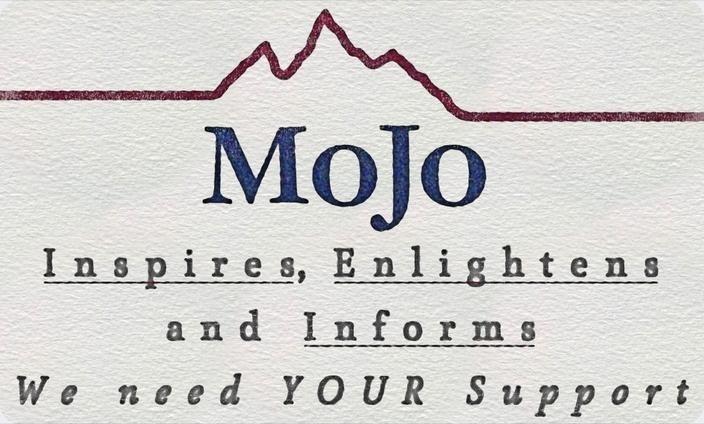Back to StoriesThe Greater Yellowstone Drought Continues
May 10, 2024
The Greater Yellowstone Drought ContinuesWeather experts predict warm, dry summer, ‘normal’ wildlife conditions
by Julia Barton
Much of Greater Yellowstone was treated to a late-season
snowstorm earlier this week, topping off what was largely a low snow year
courtesy of the winter’s El Niño weather pattern. Despite this week’s storm
however, it’s likely that the above average temperatures and below average
precipitation that characterized much of the winter months will persist through
spring and summer in the region, according to the National Weather Service.
Water is a critical resource in the West with implications for
agriculture, recreation and, of course, wildfires. As spring runoff begins, Mountain Journal spoke with
Montana-based Natural Resources Conservation Service hydrologist Eric Larson
and Wyoming-based NWS meteorologist Chris Jones to break down what recent
outlooks mean for Greater Yellowstone.
Larson explained how summer water supply is closely tied to
winter snowpack. Currently, Greater Yellowstone is experiencing drought
conditions ranging from abnormally dry to severe drought, according to the May
9 U.S. Drought Monitor, and snowpack varies across the region.
Northwest Wyoming and eastern Idaho are faring better than
southwest Montana in terms of snow water equivalent, the amount of water
available in the snow, per SNOTEL data from NRCS. Conditions in the Upper
Snake, Snake Headwaters and Big Horn river basins are consistent with the
30-year average for snow water equivalent, while the Missouri Headwaters and
Upper Yellowstone basins hold roughly 80 percent of the average for this time
of year.
“It was really, really dry from November through mid- to
late January, especially in the Greater Yellowstone Area,” Larson said. “Lower
snow years generally result in a lower runoff.”
Pairing the below-average snowpack with predictions for a
warm, dry couple of months will likely result in persistent drought conditions across
the region, according to the NWS Seasonal Drought
Outlook.
Historically, El Niño years such as 2023-2024 will bring
warm, dry conditions persist through August and then transition into a cooler,
wetter fall and early winter as the La Niña cycle begins, Jones said.
Three-month seasonal outlooks released by the NWS in mid-April predict a 50-60
percent chance of above average temperatures and a 40-50 percent chance of
below average precipitation from June through September in southwest Montana,
northwest Wyoming and eastern Idaho.
Potential implications of low water supply include water-use
ordinances and fishing restrictions, according to Larson. The good news? The
National Interagency Fire Center’s wildfire outlook predicted normal fire
conditions in Greater Yellowstone through August per its May 1 outlook. Areas just west of Greater
Yellowstone in central Idaho are predicted to experience higher wildlife
danger.
“We're trying to look over a 90-day period, which is a lot
of time in the world of weather,” Jones said. “But at least right now, it's
shaping up to be a normal [fire] season. Late July and August is when we would
expect to see some wildfires that could erupt.”
Weather conditions can always vary from predictions and it
just takes a single dry lightning storm or spell of wet weather to drastically
change the fire outlook, Jones explained. For now, a warm, dry spring and
summer appears likely for Greater Yellowstone.
EDITOR'S NOTE: Read more MoJo coverage of winter 2023-2024's low precipitation here.
________________________________________________________________________________________________________________________
Mountain Journal is the only nonprofit, public-interest journalism organization of its kind dedicated to covering the wildlife and wild lands of Greater Yellowstone. We take pride in our work, yet to keep bold, independent journalism free, we need your support. Please donate here. Thank you.
Related Stories
August 26, 2024
Scientific Conference on Greater Yellowstone Comes to Big Sky
Conservation stakeholders converge Sept. 3-5 to share research and advance
conservation awareness and efforts in the GYE.
April 19, 2024
Paradise Planned
An April 16 commission vote
clarified the process for updating Park County's growth policy.
January 14, 2025
Feds Look to Expand Montana’s Largest Coal Mine
The 19-million-ton expansion is estimated to extend Spring Creek Mine’s operational life by five years.






